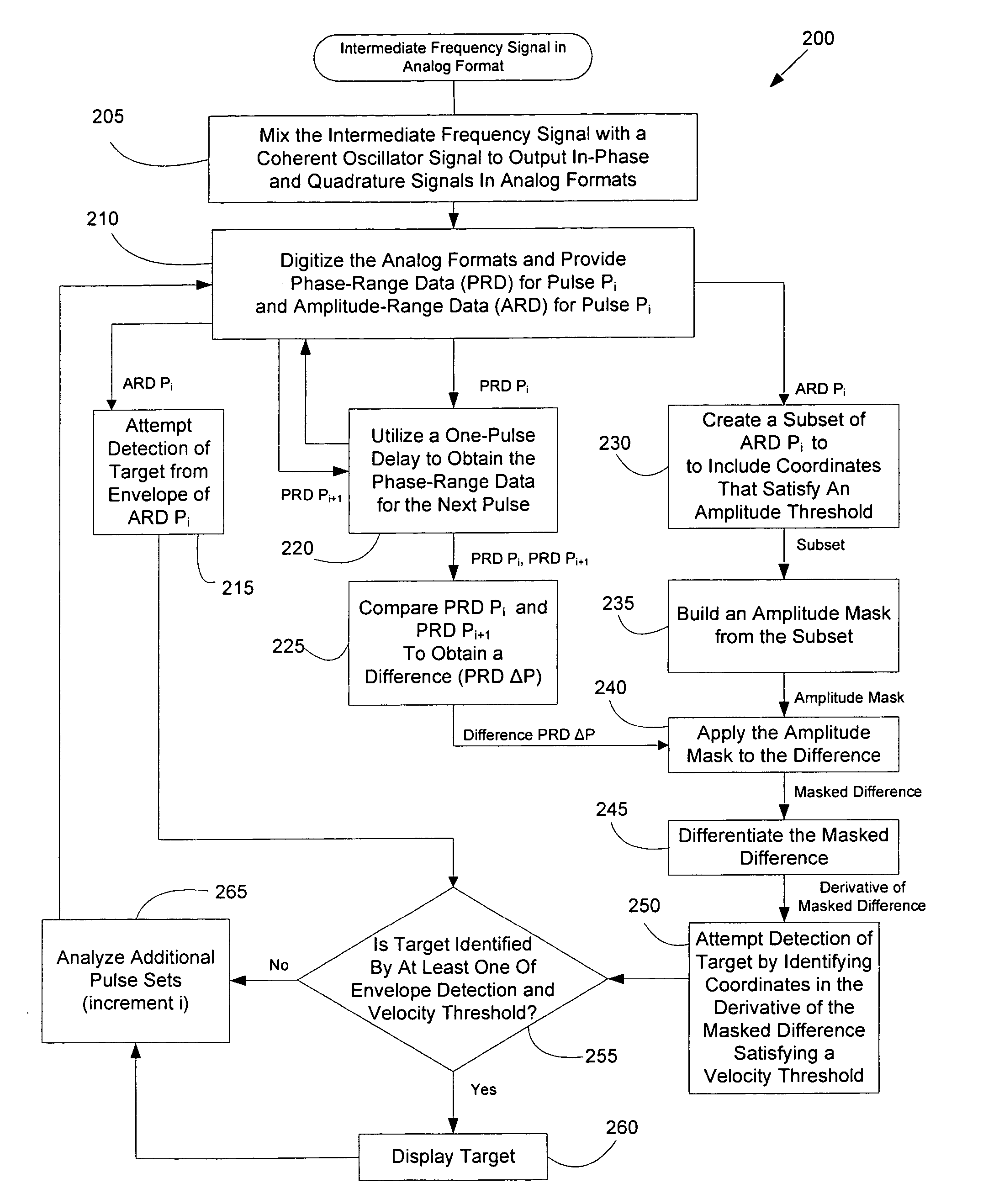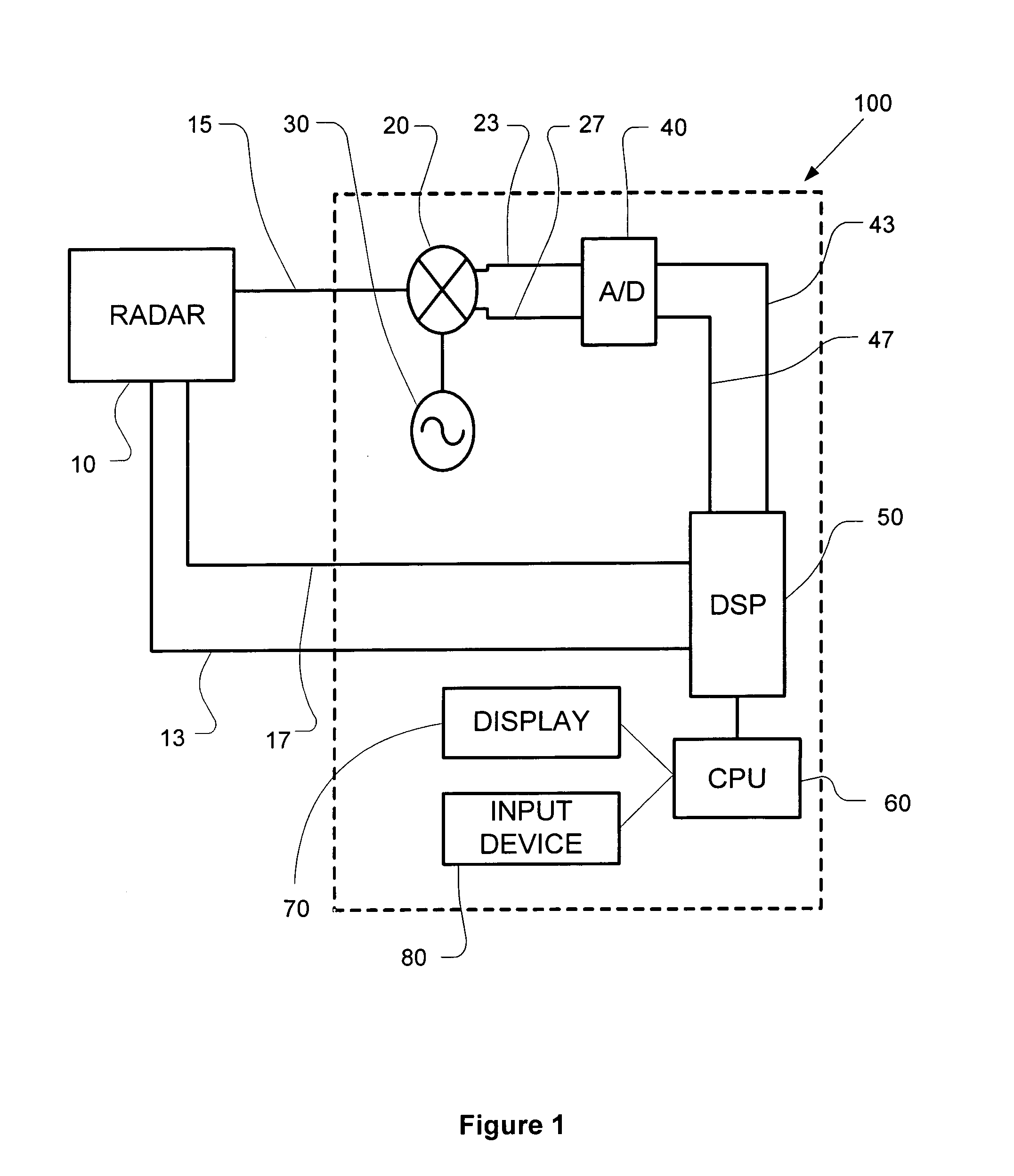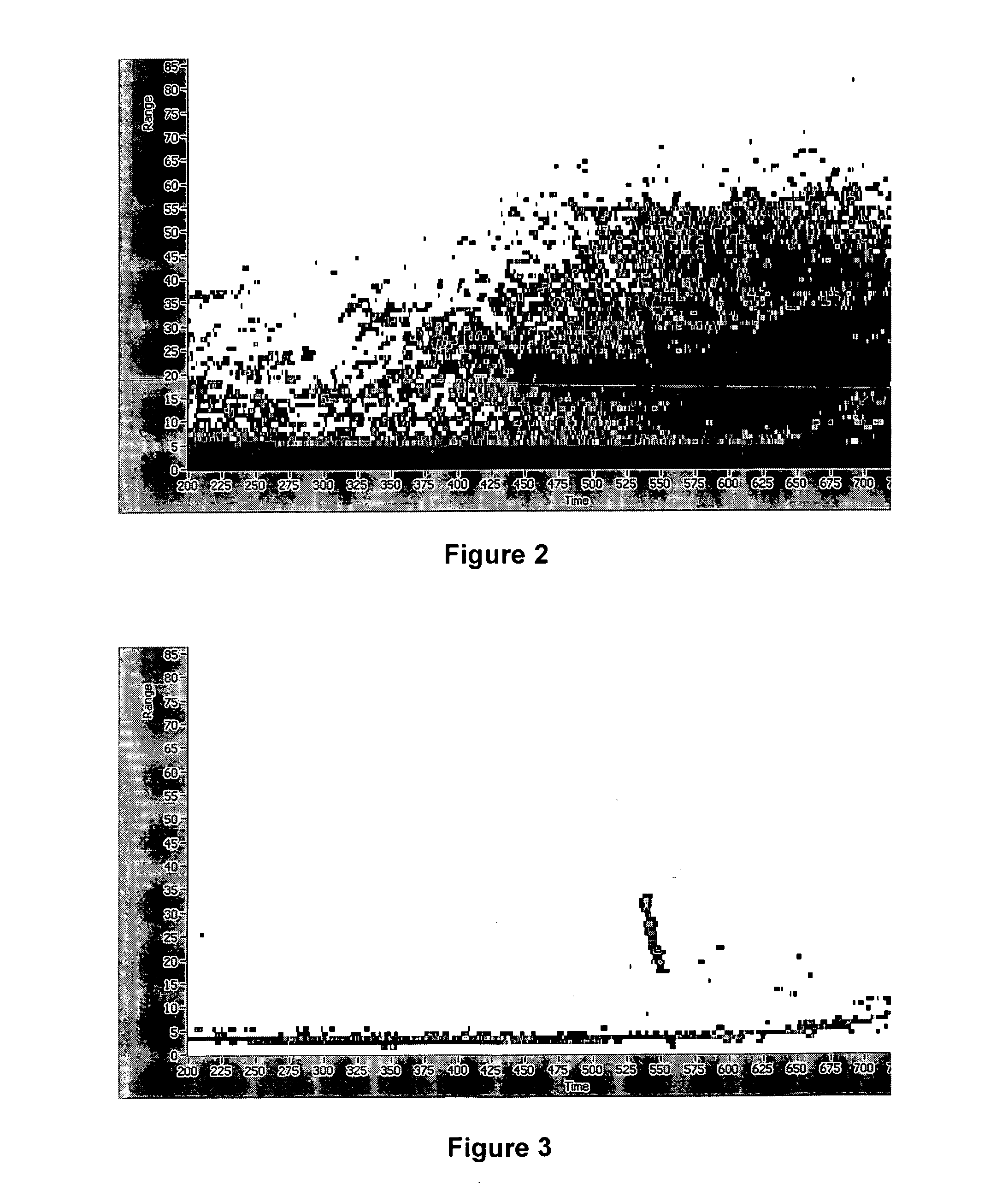System for enhanced detection of a target
a target detection and target technology, applied in the field of enhanced detection systems, methods and devices, can solve the problems of cost differential, cost-prohibitive, invasive hardware modifications, including the addition of components and signal paths, and the ability to achieve the effect of enhancing the detection effect, and achieving the effect of cost-prohibitive, cost-prohibitive, and cost-prohibitiv
- Summary
- Abstract
- Description
- Claims
- Application Information
AI Technical Summary
Benefits of technology
Problems solved by technology
Method used
Image
Examples
Embodiment Construction
[0051] In describing a preferred embodiment of the invention illustrated in the drawings, specific terminology will be used for the sake of clarity. However, the invention is not intended to be limited to the specific terms so selected, and it is to be understood that each specific term includes all technical equivalents which operate in a similar manner to accomplish a similar purpose.
[0052] With principal reference to FIG. 1, an enhanced detection system is designated generally 100 and shown coupled to a radar device 10. In preferred embodiments, enhanced detection system 100 comprises a mixer 20, a coherent oscillator 30, an analog-to-digital converter 40, a digital signal processor 50, a central processing unit 60, a display 70, and an input device 80.
[0053] Enhanced detection system 100 is suitable for cohering non-coherent radar devices, such as a magnetron-based radar device; however, embodiments of enhanced detection system 100 may also be suitable for enhancing the perfor...
PUM
 Login to View More
Login to View More Abstract
Description
Claims
Application Information
 Login to View More
Login to View More - R&D
- Intellectual Property
- Life Sciences
- Materials
- Tech Scout
- Unparalleled Data Quality
- Higher Quality Content
- 60% Fewer Hallucinations
Browse by: Latest US Patents, China's latest patents, Technical Efficacy Thesaurus, Application Domain, Technology Topic, Popular Technical Reports.
© 2025 PatSnap. All rights reserved.Legal|Privacy policy|Modern Slavery Act Transparency Statement|Sitemap|About US| Contact US: help@patsnap.com



